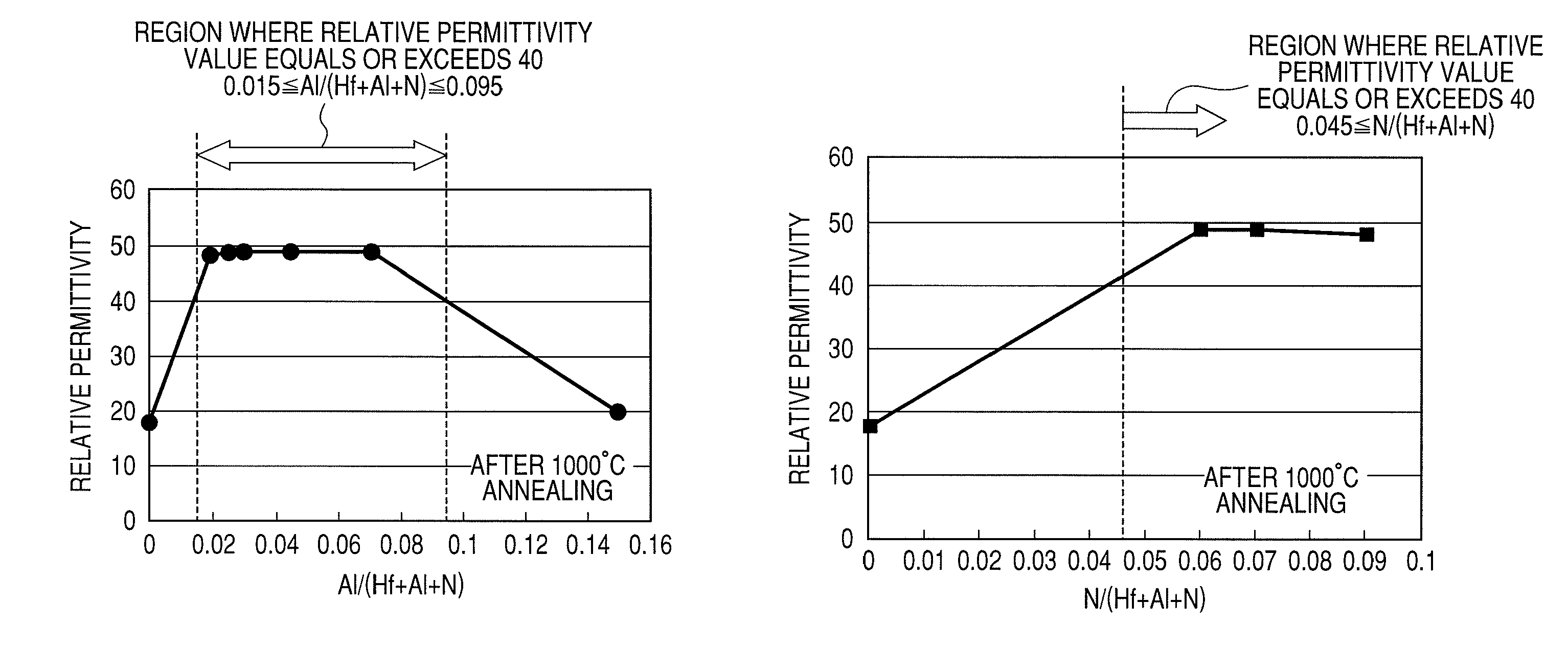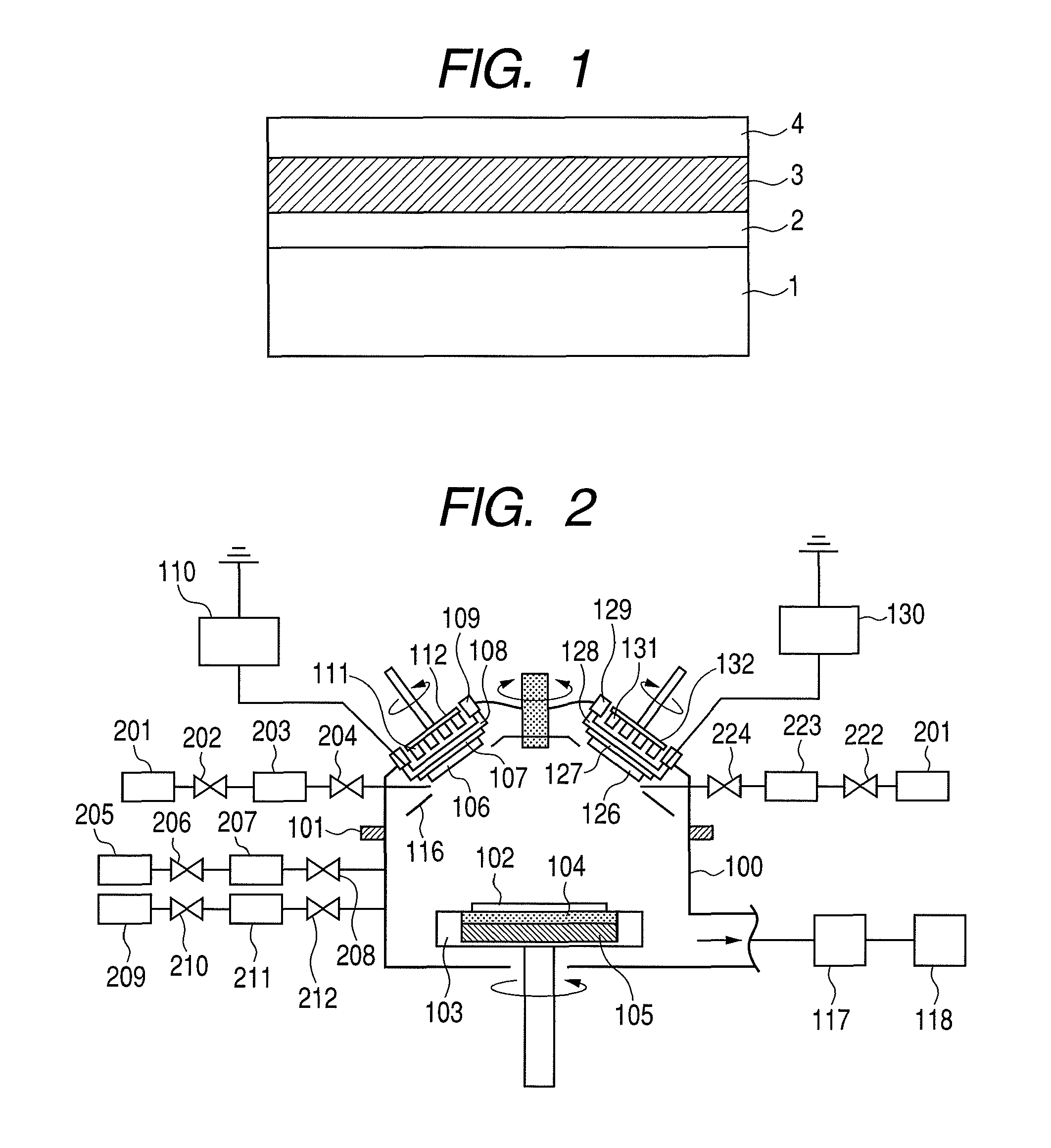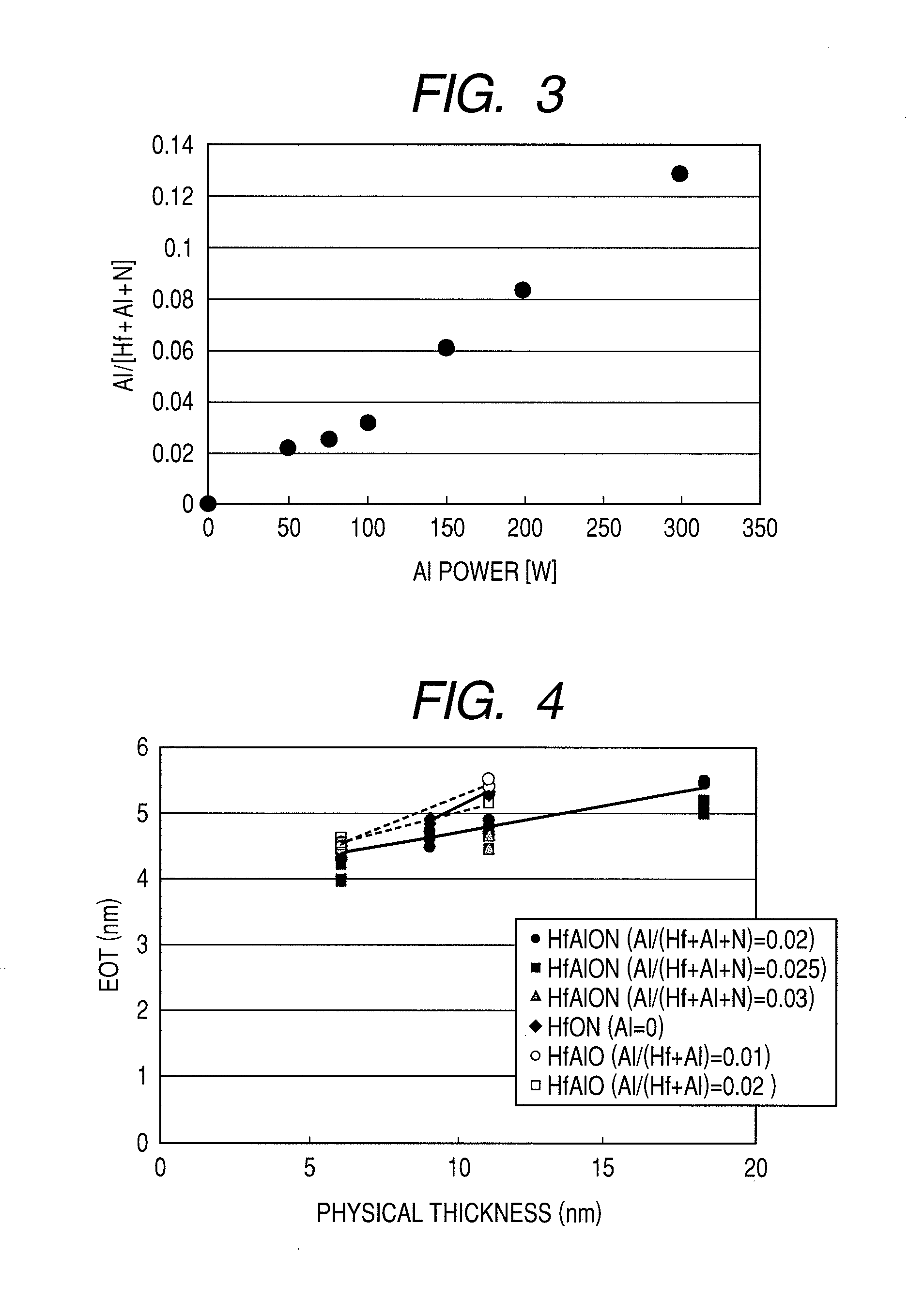Method of manufacturing dielectric film that has hafnium-containing and aluminum-containing oxynitride
a manufacturing method and dielectric film technology, applied in the field of manufacturing dielectric film and semiconductor devices, can solve the problems of sputtering method, slowing down the deposition rate of dielectric films, and reducing the sputtering rate, and achieve the effect of superior flatness and higher permittivity
- Summary
- Abstract
- Description
- Claims
- Application Information
AI Technical Summary
Benefits of technology
Problems solved by technology
Method used
Image
Examples
first example
Example Using Cosputtering
[0100]A first example of the present invention will now be described in detail with reference to the drawings.
[0101]FIG. 18 is a diagram illustrating an MIS capacitor having a dielectric film formed by the method according to the present invention. A substrate processing apparatus according to the present example such as that illustrated in FIG. 2 deposited a HfAlON film 303 having a noncrystalline structure by a sputtering method on a silicon substrate 301 having, on a surface thereof, a silicon dioxide film 302 with a film thickness ranging from 3 nm to 5 nm. Metallic targets of Hf and Al were used as the targets 106 and 126. Argon, oxygen, and nitrogen were used as sputtering gases.
[0102]A substrate temperature can be arbitrarily set within a range of 27° C. to 600° C., a target power to within a range of 50 W to 1000 W, a sputter gas pressure to within a range of 0.02 Pa to 0.1 Pa, an Ar gas flow rate to within a range of 1 sccm to 200 sccm, an oxygen g...
second example
Example Applied to Gate Insulating Film
[0116]A second example of the present invention will now be described in detail with reference to the drawings.
[0117]FIG. 19 is a diagram illustrating processes of a semiconductor device manufacturing method according to a second example of the present invention.
[0118]First, as depicted by process 1 in FIG. 19, a substrate processing apparatus according to the present example forms an element isolation region 402 on a surface of a silicon substrate 401 using a STI (shallow trench isolation) technique. The substrate processing apparatus according to the present example then forms a silicon dioxide film 403 with a film thickness of 1.8 nm on the element-isolated surface of the silicon substrate 401 using a thermal oxidation method. Subsequently, the substrate processing apparatus according to the present example forms a HfAlON film with a film thickness ranging from 1 nm to 10 nm using the same method as the first example. Next, the substrate pro...
third example
Example Applied to Blocking Film of Non-Volatile Memory Element
[0123]FIG. 20 is a cross-sectional diagram illustrating fabricating processes of a semiconductor element according to a third example of the present invention.
[0124]First, as depicted by process 1 in FIG. 20, a substrate processing apparatus according to the present example forms an element isolation region 502 on a surface of a silicon substrate 501 using a STI (shallow trench isolation) technique. The substrate processing apparatus according to the present example then forms a silicon dioxide film as a first insulating film 503 to 30 Å to 100 Å on the element-isolated surface of the silicon substrate 501 using a thermal oxidation method. Subsequently, the substrate processing apparatus according to the present example forms a silicon nitride film as a second insulating film 504 to 30 Å to 100 Å using an LPCVD (low pressure chemical vapor deposition) method. Next, the substrate processing apparatus according to the pres...
PUM
| Property | Measurement | Unit |
|---|---|---|
| pressure | aaaaa | aaaaa |
| relative permittivity | aaaaa | aaaaa |
| relative permittivity | aaaaa | aaaaa |
Abstract
Description
Claims
Application Information
 Login to View More
Login to View More - R&D
- Intellectual Property
- Life Sciences
- Materials
- Tech Scout
- Unparalleled Data Quality
- Higher Quality Content
- 60% Fewer Hallucinations
Browse by: Latest US Patents, China's latest patents, Technical Efficacy Thesaurus, Application Domain, Technology Topic, Popular Technical Reports.
© 2025 PatSnap. All rights reserved.Legal|Privacy policy|Modern Slavery Act Transparency Statement|Sitemap|About US| Contact US: help@patsnap.com



